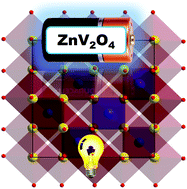Electrochemical exploration of the effects of calcination temperature of a mesoporous zinc vanadate anode material on the performance of Na-ion batteries†
Abstract
Nowadays, transition metal oxides are being rapidly developed for application as Na-ion storage anode materials, which provide a relatively high theoretical capacity compared to the graphitic anode; however, the evaluation of enhanced electrochemical performance of SIBs via various approaches, such as coating or doping, is an ongoing process. Hence, in this study, a mesoporus ZnV2O4 anode material with a spinel structure was successfully synthesized via a solvothermal technique followed by calcination at different temperatures; moreover, the impact of the calcination temperature on the Na-ion storage performance of this anode material was thoroughly investigated for the first time. The initial discharge capacities of 178, 251, and 296 mA h g−1 were obtained for the cacination temperatures of 500, 600, and 700 °C, respectively; after 250 cycles, the ZVO-700 electrode retained the discharge capacity of 166 mA h g−1 at 200 mA g−1 with the high coulombic efficiency of 99%. Furthermore, ZVO-500 and ZVO-600 retained 55 mA h g−1 and 99 mA h g−1 with a ∼27% and ∼42% retention rate, respectively. The electrochemical Na-ion storage performance is predicted by the conversion reaction of ZnV2O4. Moreover, the ZVO-700 sample showed higher surface area and pore volume, which led to remarkable electrochemical performance, than the ZVO-500 and ZVO-600 samples.



 Please wait while we load your content...
Please wait while we load your content...